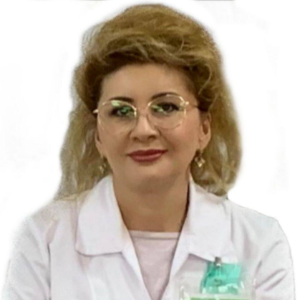Title : Characteristics of clinical forms of papillomavirus infection of cervical and extragenital localization in patients with genital warts
Abstract:
The spectrum of lesions caused by the Human PapillomaVirus (HPV) is divided into cutaneous and mucous, and they, in turn, into lesions with high, medium and low risk of malignant transformation. Diseases associated with HPV are of particular importance due to the high oncogenic potential of this virus, which makes its identification very important in a number of oncological diseases. The most studied to date are urogenital types of HPV, such as HPV 6,11,42,16/18, 31/33, however, research in this area continues, since the presence of the virus does not always guarantee the development of the disease. The number of dermatoses and mucocutaneous lesions associated with HPV continues to increase as diagnostic capabilities expand, in particular PCR diagnostics. The spectrum of HPV types associated with certain dermatoses and mucosal lesions can be represented by both low- and highly oncogenic virus types. (Arrabal-Polo et al., 2013). The presence of highly oncogenic HPV types is known to be a factor that increases the risk of oncogenic transformation of tissues affected by the virus. It is known that the presence of low-oncogenic virus types increases the risk of the simultaneous presence of its highly oncogenic types several times. Whether this is associated with microbial contamination or with the properties of the macroorganism is also not fully understood. A certain relationship has been revealed between anogenital and urogenital manifestations associated with the presence of HPV (Prilepskaya V.N. 2014). The course of papillomavirus infection largely depends on the state of the immune system. In 70–80% of cases, it can be transient, and then spontaneous clearance of the affected tissue from the human papillomavirus is observed. In this regard, the aim of our study was the clinical characteristics and study of the spectrum of HPV types in patients with a combination of genital warts (GW) and extragenital neoplasms according to PCR diagnostics.
Results. The results of clinical observation of 87 patients with GW made it possible to identify the presence of additional HPV foci of extragenital localization in 27 (31.0%) patients. In this case, extragenital foci had the form of keratomas – in 10 (37.0%), congenital melanocytic nevi – in 7 (25.9%), congenital non-melanocytic nevi – in 4 (14.8%), common warts – in 2 (7.4%), papillomas in the neck, axillary region and under the mammary glands – in 4 (14.8%). Additional HPV foci on the cervix, confirmed by PCR diagnostics, were present in 29 (33.3%) patients, with polyps occurring in 7 (24.1%), erosive lesions – in 17 (58.6%), cervicoinertetrial neoplasia grades I-II – in 5 (17.2%). PCR detection of 21 HPV types from microbiopsies of altered tissues showed the presence of types 51, 53,6,16,11, 18 in biopsies from extragenital foci at a concentration of more than 3.9 lg. And in scrapings from the cervix of patients with pathological changes in the cervix, the presence of HPV types 6, 11, 16, 18 was detected.
Conclusion. Thus, among patients with genital warts, there is a presence of both low-oncogenic and highly oncogenic HPV types, while there was a simultaneous presence of 3-4 HPV types, which can significantly increase the risk of relapses of GW and the risk of oncogenic transformation of the cervix. The presence of additional extragenital HPV foci in the form of congenital melanocytic nevi, congenital non-melanocytic nevi, common warts, papillomas was also revealed - in 31.0% of cases and the presence of pathological changes in the cervix in the form of polyps, erosive lesions and CIN I-II degree in 33.3% of patients. And extragenital HPV foci can be a source of self-infection, or household infection and relapses in sexual partners and family members and close environment.



